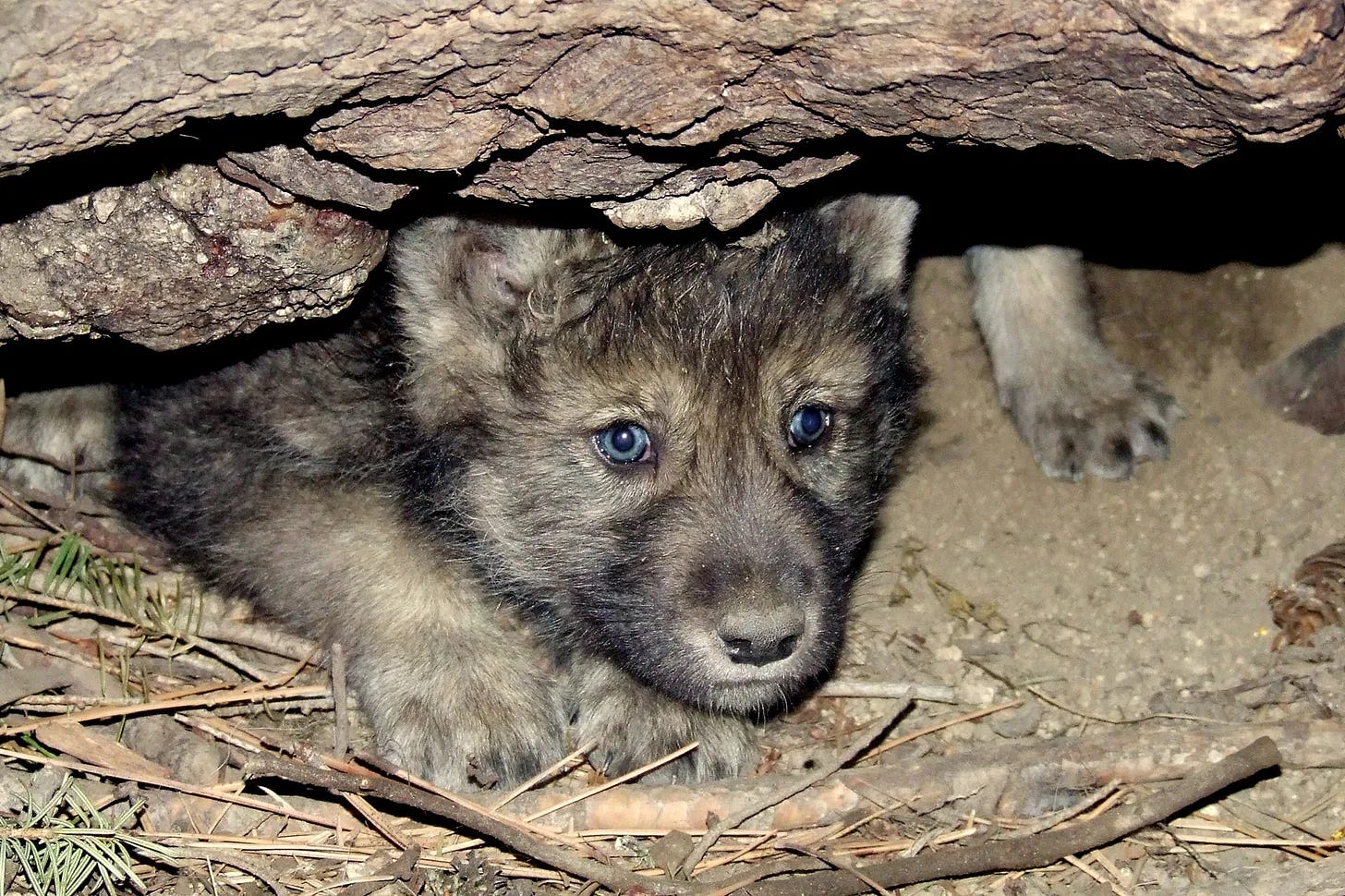Humans (or Blendingar and even wolves for that matter) are a k-selection species. They invest energy on their offsprings rather than reproduce in relatively huge numbers (relative to r-selected populations). This is in contrast to r-selection species, governed by their biotic potential, and thus, that focus resources on reproducing in exceptionally high numbers, very quickly, with limited or no care for the offsprings. Example of an r-selection species are insects or fishes (capable of producing thousands of larvae/eggs/offsprings quickly and at once).
In contrast, K-selection species have long gestation periods, and slow maturation (and thus extended parental care), long life spans, and tend to inhabitant stable biological communities.
This means that human (and Blendingr) offsprings - both males and females - require exceptionally high focus and resources for their development, over the course of many years, and in a stable environment.
In the case of female offsprings, the care is best provided by other females, such as the mother. In the case of male offsprings, however, it is not a question of the best care being provided by males (once weaned from mother), but a matter of care by males being absolutely essential and critical for the youth’s development. This is done by the father, supported as applicable by other males in his tribe, unit or war band. Without reliance on the state which goal is to emasculate and thus eliminate males.
Human males also produce 1,500 sperms per second (15,000 for Blendingar). This means that, biologically, we are expected to spread seed and breed as many females as possible. But this doesn’t mean we relinquish responsibilities over our male offsprings. As a matter of fact, this high breeding potential serves to ensure more male offsprings are produced (as a spermatogenesis of 1:0 is only a standard in Blendingar, for obvious reasons), while promoting greater competition among progenitors. Purpose is to raise stronger male youths in a more stable and suitable environment, who will in turn display core and traditional evolutionary traits and characteristics of males and warriors. Thus, these males will then be able to protect the population and the weaker majority (including but not limited to females), as a condition of species survival.
In practical terms, a male will be responsible for his male offsprings no matter what. It is therefore essential to very carefully and wisely select suitable breeding females, and refrain from engaging in reckless breeding. For the purpose of critically essential sexual release, outside of breeding for offsprings, and Óðr, bisexuality can therefore be a significant advantage, evolutionary or otherwise.
Within Skjǫldrinn the responsibility of a male towards his male offsprings is nearly absolute. This doesn’t mean that a male here will necessarily always be able to raise his boy(s) - circumstances are not always ideal - but that at the very least, he will be responsible for whatever happens to his boy(s), in the eyes of his peers and that of the order.
The concept extends quite far. Even if a female steals semen from a used condom in order to get pregnant with his boy, the male remains responsible for engaging with the (clearly unsuitable) female in the first place and for not keeping the female under control. If the female gets legal custody of boys, the male is also ultimately responsible for not ensuring safeguards to ensure he would retain sole custody of his offsprings, and once again, for failing to control a breeding female. If the boy fails to meet the standards of the male’s blood line because he was produced with an unsuitable female, once again, it remains ultimately the responsibility of the progenitor.
It is therefore absolutely critical to be exceptionally selective with breeding females. Some of her genes will be expressed in your boys, and you don’t want your boys to share genes you deem unsuitable or straight up toxic. Safeguards are also to be sought to ensure father will retain custody of boy(s) in the event of very likely separation (majority of heterosexual relationships break apart before the offsprings are of age, with the number being much higher, and close to 100%, with Úlfheðnar). This can be achieved legally, including by exploiting laws designed to benefit same sex relationships in various jurisdictions (including Ontario, in Canada), and thus breed outside of the context of a formal and traditional family unit. Note that financial support through child support or alimony is not an acceptable form of care. In such instances, the mother will have discretion for the spending of allocated funds, which will very rarely be in the best interest of the boy.
Environment and resources for breeding shall also be suitable. You cannot breed for a boy if you are unable to provide him with the care he needs, from location of shelter (that should not be in a city), to proper nutrition, education (home-schooling is essential as boys shall be kept outside of the custody of the state), to clothing, developmental resources, and even sufficient nurturing, including emotional allocation. You also need to limit your breeding to the number of boys you can reasonably raise, taking of course into consideration your stable current support system, may it be your tribe, unit, or war band.
Finally, once you have one or more male offsprings, your behavior ought to change as well, and you need to better consider risk, including the benefits/disadvantages of every action and decision, so you survive long enough to raise your boy(s) and you remain free from the state.
Ultimately, a man ought to allocate exceptionally high resources to his male offspring(s). Í vegi jarðar. That is the way of things.


